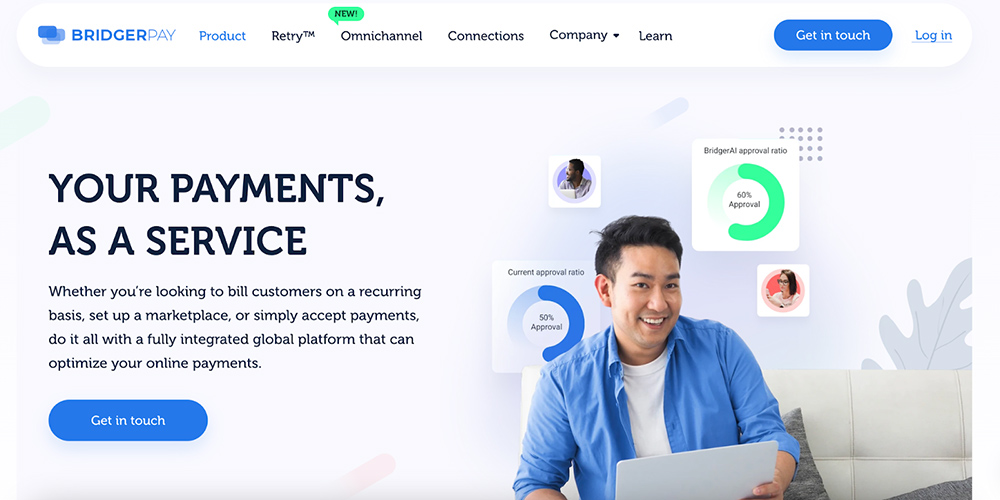Most companies treat the payments stack as a background utility, but that’s a missed opportunity. Payments don’t just process revenue; they shape it. Approval rates, routing, provider access, and data visibility all impact customer experience, margins, and global growth.
As digital businesses scale and payment needs become more complex, the challenge becomes architectural: how to optimize performance without draining engineering resources or locking into a single provider.
BridgerPay addresses this by acting not just as a payments solution, but as an orchestration platform built for business acceleration.
From Integration to Growth Acceleration
BridgerPay enables merchants to access over 300 payment service providers (PSPs) in 170 countries through a single integration. This connectivity eliminates the overhead of custom development each time a company enters a new market or adopts a new payment method. Instead of building one-off connections, teams can expand their global reach with minimal friction, often activating new regions in a matter of days.
The platform processes over $250 million in monthly transaction volume for approximately 250 businesses, providing a foundation for seamless payments across various industries and geographies.
Recovering Revenue That Was Already Yours
One of the most tangible ways BridgerPay drives growth is through Bridger Retry™, its intelligent decline recovery engine. When a transaction is declined due to soft errors, such as temporary authorization issues or network timeouts, the platform automatically reroutes it to another available PSP.
This isn’t a marginal pain. Merchants using Bridger Retry™ have seen up to a 30% increase in recovered payments. In Asia, retry success rates reach 20%, while those in European and North American markets average 6% and 3.8%, respectively. Since launching the feature in 2019, BridgerPay has recovered more than $190 million in otherwise lost revenue.
These numbers aren’t theoretical advantages. They represent recovered sales, retained customers, and performance gains with zero additional customer interaction required.
Smarter Routing, Lower Costs
Another less visible but equally impactful area is cost efficiency. Processing fees and approval rates vary significantly between PSPs. BridgerPay’s smart routing automatically sends each transaction through the provider most likely to approve it at the lowest cost. This optimization occurs behind the scenes, in real-time, minimizing fees and maximizing approvals.
Without orchestration, merchants face rising complexity and manual management as they scale. With it, the cost curve flattens. Teams spend less time integrating and troubleshooting and more time refining strategy and performance.
Centralized Data, Elevated Decision-Making
Most businesses running multi-PSP operations suffer from fragmented data. Each provider has its own dashboard, reporting structure, and performance metrics. BridgerPay unifies this information into a centralized view, giving finance, operations, and fraud teams a single source of truth.
This clarity helps with reconciliation, enabling pattern detection, provider performance comparison, and proactive issue resolution. For scaling businesses, these insights can make the difference between reactive firefighting and proactive optimization.
The Bigger Picture: Payments as a Strategy
The rise of payment orchestration platforms reflects broader shifts in the digital economy. The global payment orchestration market is growing at a rate of 20-25% annually, driven by the increasing complexity of e-commerce and customer demand for greater flexibility. This growth rate indicates a significant market potential for businesses. Meanwhile, global ecommerce itself is on track to surpass $7 trillion in value by 2025.






